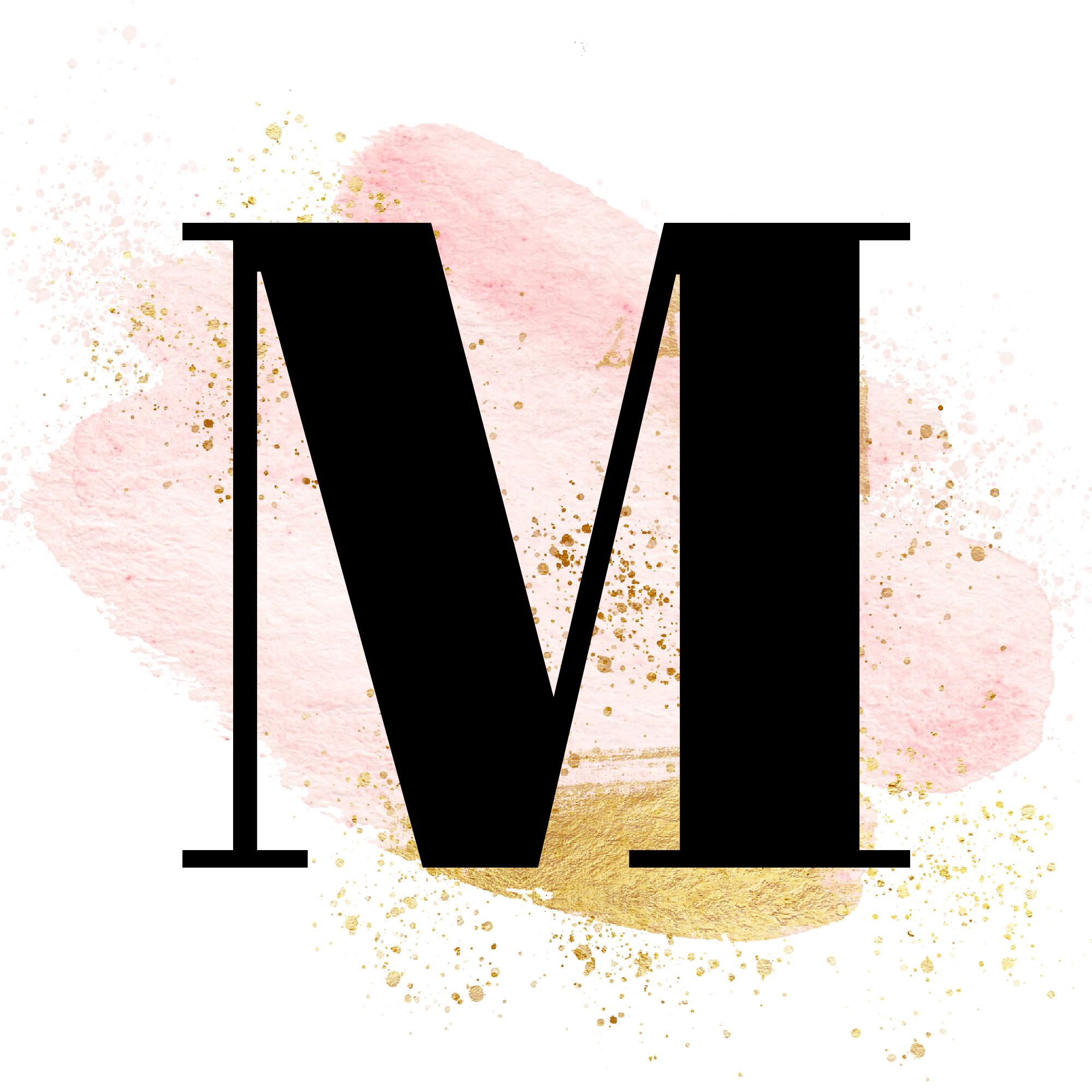When it comes to choosing the right type of powder for your makeup, it can be confusing trying to figure out which one is best for your needs.
Baking powder and setting powder are both types of face powder, but they have different purposes.
So, baking powder vs setting powder – what is the difference? Keep on reading to find out!
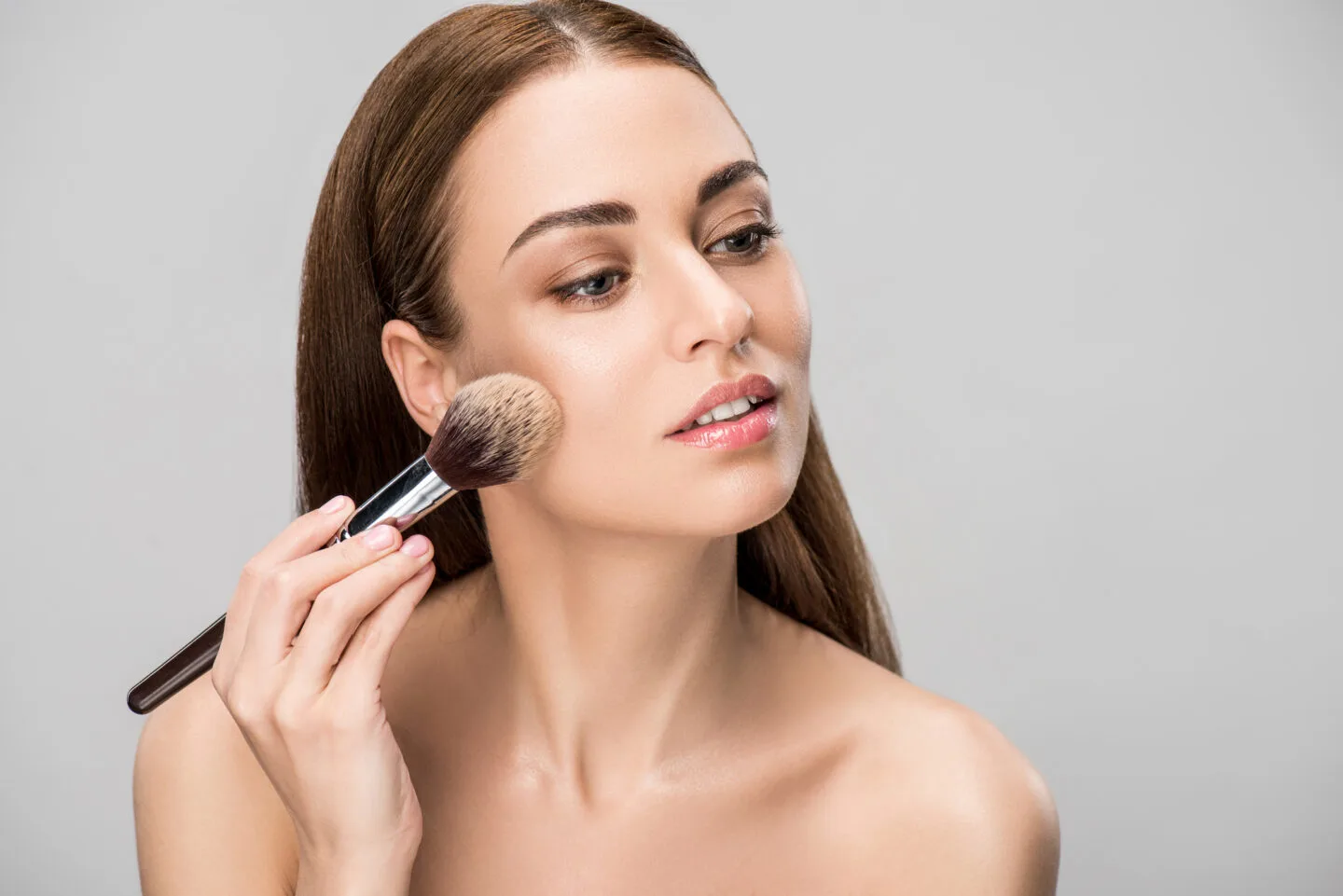
What does baking your makeup mean?
Baking powder makeup is a process that involves letting powder sit on your face for a prolonged period of time, typically 10-15 minutes.
The heat from your face sets your makeup, giving you a long lasting, and often more matte, finish.
Baking is often used to set concealer under the eyes and highlight cheekbones, but can be applied all over the face.
One downside to baking is that it can accentuate wrinkles and fine lines, so it’s important to use a light hand if you have mature skin.
What does a makeup baking powder do?
Makeup baking powder is a type of setting powder that is often used by makeup artists to set foundation and concealer.
It is usually applied with a damp sponge or Beautyblender, and then left to “bake” for a few minutes before being brushed off.
Baking powder helps to set makeup in place, and it also has a mattifying effect that can help to reduce shine.
The process of “baking” helps to lift and soften the appearance of fine lines and wrinkles.
As a result, many people believe that makeup baking powder is an essential step in achieving a flawless makeup look.
What is a setting powder?
A makeup setting powder is a cosmetic product that is applied after foundation to set the foundation and help make it last longer.
The powder is usually applied with a fluffy powder brush or a puff, and it can be transparent or tinted.
Transparent setting powders are ideal for those with oily skin, as they help to control shine and absorb excess oil.
Tinted setting powders can be used to add a bit of skin tone color and coverage, while also helping to set makeup.
Setting powders can help to reduce the appearance of fine lines and wrinkles.
When applied correctly, a setting powder can enhance the staying power of liquid foundation and provide a smooth, flawless finish.
What are the most popular setting powders?
There are many factors to consider when choosing a setting powder, such as skin type, desired finish, and budget.
However, some brands consistently produce high-quality powders that offer a variety of options to suit different needs.
Among the most popular setting powders on the market are Laura Mercier Translucent Loose Setting Powder which is suitable for a range of skin tones and provide a smooth, natural finish.
Laura Mercier’s powder is raved about makeup artists, and is highly regarded within the beauty industry.
If you’re looking for a drugstore option, Coty Airspun Loose Face Powder is a good choice; it’s affordable and gives the skin a soft, matte finish.
Also the Fenty Beauty Pro Filt-r Instant is a popular mid range loose powder option.
Another popular brand is RCMA Makeup, which offers a range of setting powders designed to meet the needs of professional makeup artists.
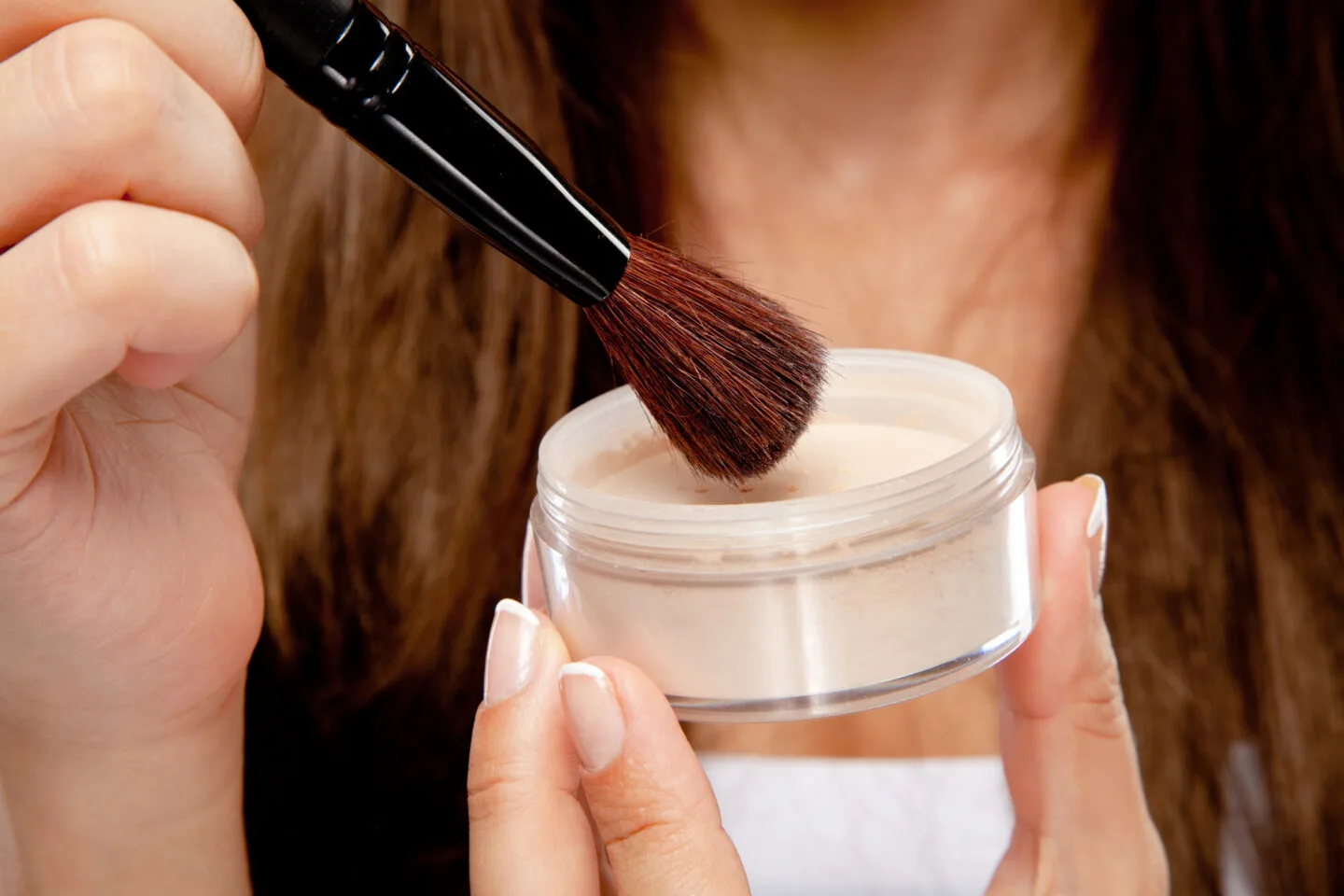
What is the benefit of setting your makeup with powder?
There are several benefits to setting your makeup with powder. Powder helps to absorb excess oil and keep foundation in place, which can help your makeup last longer.
Powder can help to reduce the appearance of fine lines and wrinkles, and it can also give your skin a smooth, matte finish.
When applied correctly, setting powder can help you achieve a flawless makeup look that will last all day long.
Now that you know the difference between baking powder and setting powder, you can decide which one is right for your needs.
If you want a long lasting, matte finish, then baking powder is a good option.
If you’re looking for a product that will help to set your makeup and reduce shine, then setting powder is a better choice.
Baking powder vs setting powder – what is the difference?
Baking powder and setting powder are both types of face powder, but they have different purposes.
Baking powder is used to set concealer under the eyes and highlight cheekbones, while setting powder is used to set foundation and help make it last longer.
Baking powder can help to reduce the appearance of fine lines and wrinkles, while setting powder can help to control shine and absorb excess oil.
Can you use baking powder as setting powder?
Baking powder can be used as a setting powder, but it is not as effective as a true setting powder.
Baking powder is designed to be left on the skin for a prolonged period of time, while setting powder is meant to be applied and then removed.
Baking powder can help to set makeup, but it will not control shine or absorb excess oil like a setting powder can.
Baking powder and setting powder are two different types of face powders with different purposes.
Baking powder is used to set concealer and highlight cheekbones, while setting powder is used to set foundation and help make it last longer.
Baking powder can help to reduce the appearance of fine lines and wrinkles, while setting powder can help to control shine and absorb excess oil.
If you’re looking for a long lasting, matte finish, then baking powder is a good option.
If you want a product that will help to set your makeup and reduce shine, then setting powder is a better choice.
What is the difference between setting powder and translucent powder?
Translucent powder Vs setting powder? When it comes to powder, there are two main types: setting powder and translucent powder.
Setting powder is typically used to set makeup, providing a long-lasting finish that resists smudging and fading.
Translucent powder, on the other hand, is designed to absorb oil and minimize shine. It can be used on its own or over foundation to create a matte finish.
While both powders have their own benefits, setting powder is generally the better choice for most people.
Not only does it provide a more durable finish, but it also doesn’t add any color or coverage.
As a result, it’s the perfect option for those who want to extend the wear of their makeup without changing its appearance.
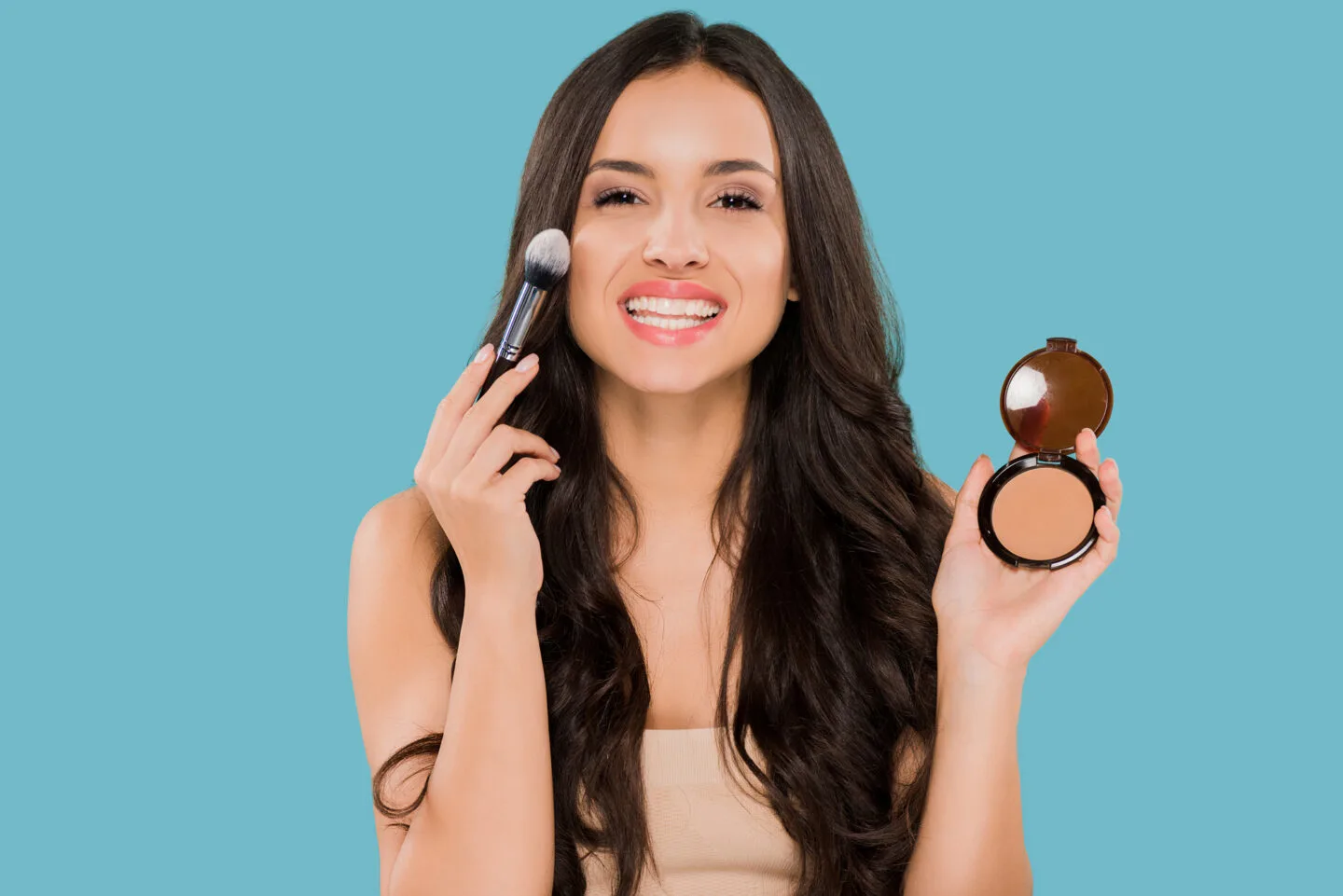
What is a banana powder?
Banana powder is a yellow-tinted setting powder that is designed to brighten the complexion and reduce the appearance of redness.
It can be applied under the eyes to camouflage dark circles, or on the eyelids as a primer for eyeshadow.
Banana powder can also be used to set concealer and foundation, and because it has a matte finish, it is ideal for those with oily skin.
Banana powder helps to absorb excess oil and control shine throughout the day.
Whether you are looking to brighten your complexion or keep your makeup in place, banana powder is a versatile product that should be in every makeup bag.
How to use a baking powder for the baking technique?
Despite its name, the baking technique has nothing to do with actual baking.
The term “baking” comes from the process of allowing powder products to sit on your skin for a short time before dusting them off, which gives your makeup a flawless finish.
Baking is often used by makeup artists to help set foundation and create a smooth canvas for the rest of the makeup.
It can also be used to highlight and contour the face. To bake your makeup, start by applying a thick layer of translucent powder to your face with a puff or brush.
Then, allow the finishing powder to sit on your skin for 5-10 minutes before dusting it off with a large brush.
You can also bake your under-eye area by applying concealer in a triangle shape under your eyes and then dusting it with loose powder.
Baking is a great way to get a photo-ready finish, but it’s important to make sure that you don’t overdo it.
Too much powder can make your skin look cakey, so start with a small amount and build up as needed.
What is the difference between a powder foundation and a setting powder?
When it comes to makeup, there are a lot of choices to make. Not only do you have to decide which products to use, but you also need to choose the right shades and textures.
For example, when it comes to powder foundation, there are two main types: powder foundation and setting powder.
Both of these products can help to create a smooth, matte finish, but they serve different purposes.
Powder foundation is typically used as a base, providing coverage and helping to even out skin tone. By contrast, setting powder is used after the rest of your makeup has been applied.
It helps to set your makeup in place and prevent shine, giving you a long-lasting, flawless finish.
So, if you’re looking for a product that will help your makeup stay in place all day long, setting powder is the way to go.
How to use a setting powder?
A setting powder is a type of face powder that is used to set foundation and help make it last longer.
It can also be used to control shine and absorb excess oil. Setting powder comes in two main types: loose and pressed.
Loose setting powder is typically applied with a large brush, while pressed setting powder comes in a compact and can be applied with a sponge or powder puff. To use a setting powder, start by applying your foundation as usual.
Then, dip a large brush into the setting powder and tap off any excess. Gently buff the powder into your skin, focusing on areas where you tend to get oily or where your makeup tends to wear off during the day.
Once you’ve applied the setting powder, you can either leave it as is or follow up with a layer of translucent powder for extra coverage, depending on your individual skin type.
Loose and pressed setting powders – which is better for setting your makeup?
There is no right or wrong answer when it comes to choosing between pressed powder and loose powder.
It usually comes down to personal preference. Both powders are easy to apply with a fluffy brush, over the top of your makeup, acting as a finishing powder.
Pressed powder is often the preferred choice for those who want a quick and easy way to set their makeup, while loose powder is ideal for those who want a more lightweight finish.
If you’re not sure which one to choose, experiment with both until you find the one that works best for you.
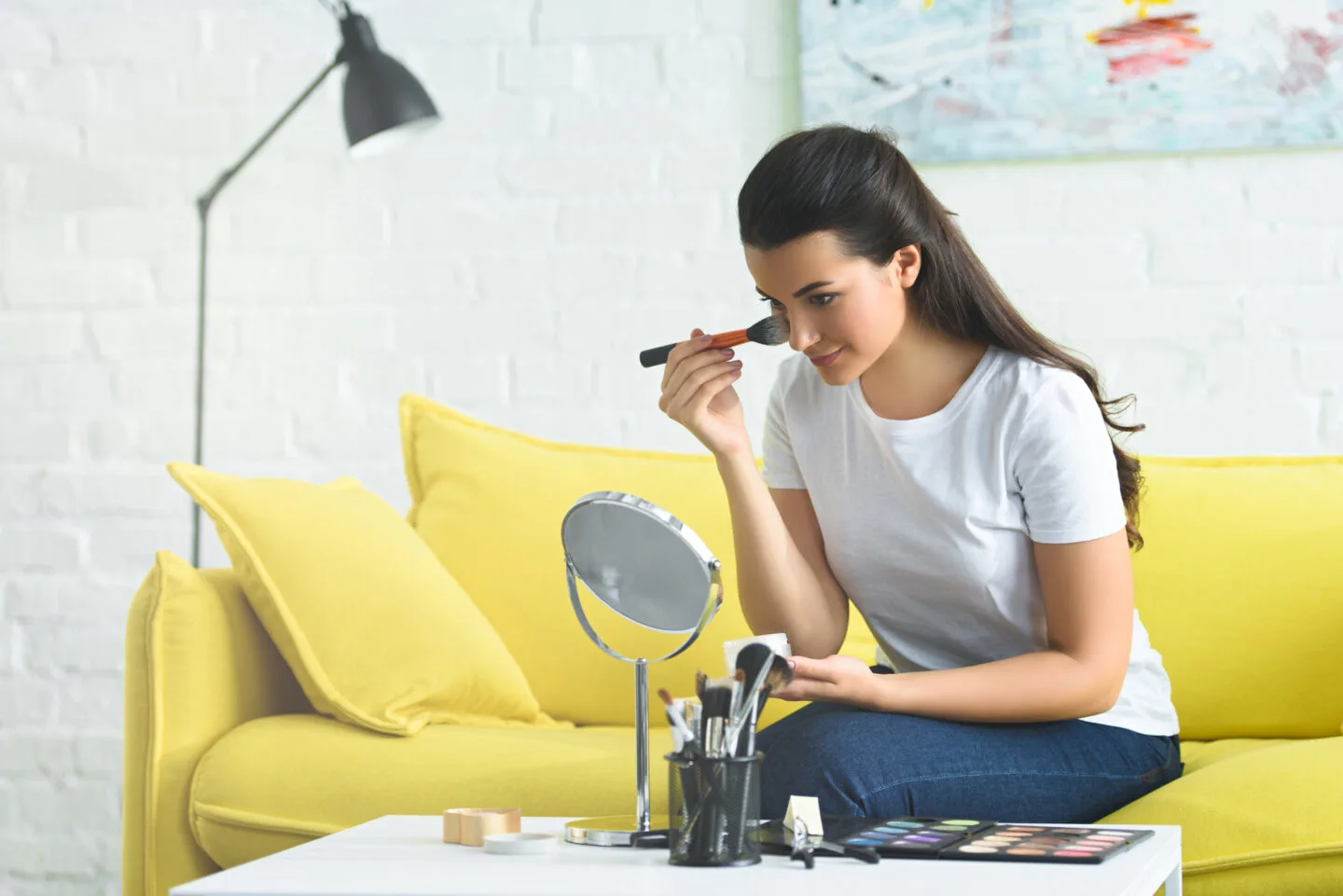
Can you use a setting powder without foundation?
Yes, you can use a setting powder without foundation. Setting powder can be used on its own to control shine and absorb oil, or it can be used to set foundation and help make it last longer.
If you’re using setting powder on its own, apply it with a large brush and focus on areas where you tend to get oily or where your makeup tends to wear off during the day.
You can also use setting powder to set concealer under your eyes or on your eyelids as a eyeshadow primer for eyeshadow.
What are the benefits of using a setting powder?
Setting powder has a number of benefits. It can help extend the wear of your foundation, control shine, and absorb excess oil. It can also be used to set concealer and eyeshadow.
Setting powder is a versatile product that can be used in a variety of ways to help you get the perfect makeup look, and is quick and easy to dust over the skin with a fluffy brush all over the face.
Is setting powder necessary?
No, setting powder is not necessary. However, using a setting powder as a silky powder can be a helpful tool for those who want to extend the wear of their foundation or control shine and oil throughout the day.
If you have oily skin or tend to touch your face often, setting powder can also be beneficial.
The finishing powder will help to lock your makeup in place, and will be an essential step in your makeup routine.
Summary
Baking powder makeup and setting powder are two different types of face powders. What is the difference between setting powder vs baking powder?
Baking powder is typically used to help set foundation and extend its wear, while setting powder is mainly used to control shine and oil throughout the day.

Hi, my name is Gemma, and I’m the owner of MakeupMuddle.com. I’m a true beauty obsessive, and love writing about anything to do with beauty – I have been a beauty writer since 2012.
